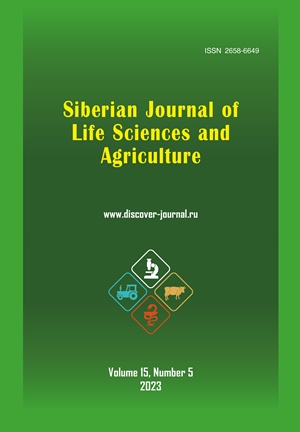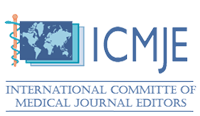СОСТОЯНИЕ НЕСПЕЦИФИЧЕСКОЙ РЕЗИСТЕНТНОСТИ НЕТОПЫРЯ МАЛОГО (PIPISTRELLUS PYGMAEUS LEACH, 1825) В УСЛОВИЯХ НЕБЛАГОПРИЯТНЫХ АНТРОПОГЕННЫХ ФАКТОРОВ
Аннотация
В настоящее время важной особенностью изучения рукокрылых млекопитающих является способность ими переносить возбудителей опасных вирусов, что имеет важное значение для эпидемиологии при анализе распространения инфекционных заболеваний. Поэтому исследование неспецифического иммунитета летучих мышей сможет позволить предположить их заболеваемость и способность переносить опасные для человека болезни. Цель исследования – изучение состояние неспецифической резистентности нетопыря малого (Pipistrellus pygmaeus Leach, 1825) в условиях неблагоприятных антропогенных факторов территории Брянской области. В статье представлены результаты анализа показателей неспецифического иммунитета нетопыря малого, обитающего на территориях с разной антропогенной нагрузкой: колония №1 – сельская местность, колония №2 – городская местность. Для определения естественной резистентности, физиологической реактивности и общей неспецифической резистентности у нетопыря малого были проведены гематологические и биохимические исследования по стандартным методикам у самцов и самок двух колоний. Определялось содержание активность лизоцима сыворотки крови, бактерицидная активность, фагоцитарная активность, циркулирующие иммунные комплексы. В организме у самцов и самок нетопыря малого, адаптация к новым условиям негативной городской среды, сопряжена с адаптационно-компенсаторными процессами, проявляющимися в гиперактивности иммунитета, выраженными нарушениями иммунной системы и клеточного иммунитета.
Скачивания
Литература
Список литературы
Бучацкий Л.П. Значение рукокрылых в эпидемиологии лиссавирусных инфекций // Ветеринарная патология. 2002. № 1. С. 26-31.
Горбачев А.А., Прокофьев И.Л., Зайцева Е.В. Факторы, влияющие на распространение летучих мышей по территории Брянской области // Вестник Брянского государственного университета. 2011. № 4. С. 128-133.
Зайцева Е.В., Харлан А.Л., Епихова О.Н., Зайцева Е.Н., Сенюкова Л.И., Чиграй О.Н. Гуморальные факторы неспецифической защиты организма цыплят-бройлеров ОАО птицефабрика "Снежка" // Ежегодник НИИ фундаментальных и прикладных исследований. 2014. № 1 (5). С. 72-76.
Карпенко Е.Н., Харлан А.Л. Обмен веществ у нетопыря малого под воздействием отрицательных экологических факторов Брянской области // Ученые записки Брянского государственного университета, 2022 (2). С. 40-47.
Макаров В.В., Лозовой Д.А. Новые особо опасные инфекции, ассоциированные с рукокрылыми. Владимир: РУДН, ФГБУ «ВНИИЗЖ», 2016. 160 с.
Мотылев С.В. Природные ресурсы и окружающая среда Брянской области: годовой доклад об экологической ситуации в Брянской области в 2015 году. Брянск: Департамент природных ресурсов и экологии Брянской области, 2016. 240 с.
Методы ветеринарной и клинической диагностики. Под ред. И.П. Кондрахина. М.: Изд-во «КолосС», 2004. 520 с.
Методы непрямой иммунофлюоресценции // Медицинская иммунология. 1999. Т. 1. №5. С. 24-28.
Силенок А.В. Влияние факторов окружающей среды на эколого-физиологические особенности организма птиц в условиях клеточного содержания: на примере цыплят-бройлеров кросса «Смена-7» в период раннего постнатального онтогенеза: автореф. дис. ... канд. биол. наук. Брянск, 2012. 24 с.
Åkerblom S, de Jong J. Mercury in fur of Daubenton’s bat (Myotis daubentonii) in southern Sweden and comparison to ecotoxicological thresholds // Bull Environ Contam Toxicol. 2017. Vol. 99. P. 561–566. https://doi.org/10.1007/s00128-017-2206-3
Bayat S., Geiser, F., Kristiansen, P., Wilson, S.C., Organic contaminants in bats: trends and new issues // Environ. Int. 2014. Vol. 63, P. 40–52. https://doi.org/10.1016/j.envint.2013.10.009
Flache L., Ekschmitt K., Kierdorf U., Czarnecki S., Düring R.A., Encarnação J.A. Reduction of metal exposure of Daubenton’s bats (Myotis daubentonii) following remediation of pond sediment as evidenced by metal concentrations in hair // Sci. Total Environ. 2016. № 547. P. 182-189. https://doi.org/10.1016/j.scitotenv.2015.12.131
Guillen W. et al. Bats in the anthropogenic matrix: challenges and opportunities for the conservation of Chiroptera and their ecosystem services in agricultural landscapes // Voigt CC, Kingston T (eds) Bats in the Anthropocene: conservation of bats in a changing world. Springer International AG, Cham. 2016. Р. 151–178. https://doi.org/10.1007/978-3-319-25220-9_6
Guimarães C., Torquetti A., Bittencourt-Guimarães T., Soto-Blanco B. Exposure to pesticides in bats // Science of The Total Environment. 2021. Vol. 755. Part 1. https://doi.org/10.1016/j.scitotenv.2020.142509
Heiker L.M., Adams R.A., Ramos C.V. Mercury bioaccumulation in two species of insectivorous bats from urban China: Influence of species, age, and land use type // Arch. Environ. Contam. Toxicol. 2018. Vol. 75. P. 585–593. https://doi.org/10.1007/s00244-018-0547-5/
Jebb D., Huang Z., Pippel M., Devanna P. et al. Six reference-quality genomes reveal evolution of bat adaptations // Nature. 2020. № 23. P. 578-584. https://doi.org/10.1038/s41586-020-2486-3
Jones G., Rebelo Н. Responses of bats to climate change: learning from the past and predicting the future // Adams RA, Pedersen SC (eds) Bat evolution, ecology, and conservation. Springer, New York, Berlin, 2013. Р. 457–478. https://doi.org/10.1007/978-1-4614-7397-8_22
Kasso М., Balakrishnan М. Ecological and Economic Importance of Bats (Order Chiroptera) // International Scholarly Research Notices. 2013. Vol. 1. Article ID 187415. http://dx.doi.org/10.1155/2013/187415
Korine C., Adams, A., Shamir, U., Gross, A. Effect of water quality on species richness and activity of desert-dwelling bats // Mamm. Biol. 2015. Vol. 80. P. 185–190. https://doi.org/10.1016/j.mambio.2015.03.009
Pulscher L.A., Gray R., McQuilty R., Rose K., Welbergen J., Phalen D.N. Investigation into the utility of flying foxes as bioindicators for environmental metal pollution reveals evidence of diminished lead but significant cadmium exposure // Chemosphere. 2020. Vol. 254. https://doi.org/10.1016/j.chemosphere.2020.126839
Put J.E., Mitchell G.W., Fahrig L. Higher bat and prey abundance at organic than conventional soybean fields // Biol. Cons. 2018. Vol. 226. P. 177–185. https://doi.org/10.1016/j.biocon.2018.06.021
Russo D., Jones G. Bats as bioindicators // Mamm. Biol. 2015. Vol. 80. P. 157–246. https://doi.org/10.1016/j.mambio.2015.03.005
Timofieieva O., Świergosz-Kowalewska R., Laskowski R., Vlaschenko A. Wing membrane and Fur as indicators of metal exposure and contamination of internal tissues in bats // Environmental Pollution. 2021. Vol. 276. https://doi.org/10.1016/j.envpol.2021.116703
Zukal J., Pikula J., Bandouchova H. Bats as bioindicators of heavy metal pollution: history and prospect // Mamm Biol. Z Saugertierkd. 2015. Vol. 80. Р. 220–227. https://doi.org/10.1016/j.mambio.2015.01.001
References
Buchackij L.P. Znachenie rukokrylyh v epidemiologii lissavirusnyh infekcij [Significance of bats in the epidemiology of lyssavirus infections]. Veterinarnaya patologiya [Veterinary pathology], 2002, no. 1, pp. 26-31.
Gorbachev A.A., Prokof'ev I.L., Zajceva E.V. Faktory, vliyayushchie na rasprostranenie letuchih myshej po territorii Bryanskoj oblasti [Factors affecting the distribution of bats in the territory of the Bryansk region]. Vestnik Bryanskogo gosudarstvennogo universiteta [Bulletin of Bryansk State University], 2011, no. 4, pp. 128-133.
Zajceva E.V., Harlan A.L., Epihova O.N., Zajceva E.N., Senyukova L.I., CHigraj O.N. Gumoral'nye faktory nespecificheskoj zashchity organizma cyplyat-brojlerov OAO pticefabrika "Snezhka" [Humoral factors of non-specific defense of the organism of broiler chickens of Poultry Farm "Snezhka"]. Ezhegodnik NII fundamental'nyh i prikladnyh issledovanij [Yearbook of the Research Institute for Fundamental and Applied Research], 2014, no. 1 (5), pp. 72-76.
Karpenko E.N., Harlan A.L. Obmen veshchestv u netopyrya malogo pod vozdejstviem otricatel'nyh ekologicheskih faktorov Bryanskoj oblasti [Metabolism in the small bat under the influence of negative environmental factors in the Bryansk region]. Uchenye zapiski Bryanskogo gosudarstvennogo universiteta [Scientific Notes of the Bryansk State University], 2022, no. 2, pp. 40-47.
Makarov V.V., Lozovoj D.A. Novye osobo opasnye infekcii, associirovannye s rukokrylymi [New especially dangerous infections associated with bats]. Vladimir: RUDN, FGBU «VNIIZZH», 2016, 160 p.
Motylev S.V. Prirodnye resursy i okruzhayushchaya sreda Bryanskoj oblasti: godovoj doklad ob ekologicheskoj situacii v Bryanskoj oblasti v 2015 godu [Natural resources and environment of the Bryansk region: annual report on the environmental situation in the Bryansk region in 2015]. Bryansk: Departament prirodnyh resursov i ekologii Bryanskoj oblasti, 2016, 240 p.
Metody veterinarnoj i klinicheskoj diagnostiki [Methods of veterinary and clinical diagnostics]. ed. I.P. Kondrahin. M.: Izd-vo «KolosS», 2004, 520 p.
Metody nepryamoj immunoflyuorescencii [Methods of indirect immunofluorescence]. Medicinskaya immunologiya [Medical immunology], 1999, vol. 1, no. 5, pp. 24-28.
Silenok A.V. Vliyanie faktorov okruzhayushchej sredy na ekologo-fiziologicheskie osobennosti organizma ptic v usloviyah kletochnogo soderzhaniya: na primere cyplyat-brojlerov krossa "Smena-7" v period rannego postnatal'nogo ontogeneza [Influence of environmental factors on the ecological and physiological characteristics of the organism of birds in cage conditions: on the example of broiler chickens of the cross "Smena-7" in the period of early postnatal ontogeny]. Bryansk, 2012, 24 p.
Åkerblom S, de Jong J. Mercury in fur of Daubenton’s bat (Myotis daubentonii) in southern Sweden and comparison to ecotoxicological thresholds. Bull Environ Contam Toxicol, 2017, vol. 99, pp. 561–566. https://doi.org/10.1007/s00128-017-2206-3
Bayat S., Geiser, F., Kristiansen, P., Wilson, S.C., Organic contaminants in bats: trends and new issues. Environ. Int. 2014, vol. 63, pp. 40–52. https://doi.org/10.1016/j.envint.2013.10.009
Flache L., Ekschmitt K., Kierdorf U., Czarnecki S., Düring R.A., Encarnação J.A. Reduction of metal exposure of Daubenton’s bats (Myotis daubentonii) following remediation of pond sediment as evidenced by metal concentrations in hair. Sci. Total Environ., 2016, no. 547, pp. 182-189. https://doi.org/10.1016/j.scitotenv.2015.12.131
Guillen W. et al. Bats in the anthropogenic matrix: challenges and opportunities for the conservation of Chiroptera and their ecosystem services in agricultural landscapes / Voigt CC, Kingston T (eds) Bats in the Anthropocene: conservation of bats in a changing world. Springer International AG, Cham. 2016, pp. 151–178. https://doi.org/10.1007/978-3-319-25220-9_6
Guimarães C., Torquetti A., Bittencourt-Guimarães T., Soto-Blanco B. Exposure to pesticides in bats. Science of The Total Environment, 2021, vol. 755. Part 1. https://doi.org/10.1016/j.scitotenv.2020.142509
Heiker L.M., Adams R.A., Ramos C.V. Mercury bioaccumulation in two species of insectivorous bats from urban China: Influence of species, age, and land use type. Arch. Environ. Contam. Toxicol. 2018, vol. 75, pp. 585–593. https://doi.org/10.1007/s00244-018-0547-5/
Jebb D., Huang Z., Pippel M., Devanna P. et al. Six reference-quality genomes reveal evolution of bat adaptations. Nature, 2020, no. 23, pp. 578-584. https://doi.org/10.1038/s41586-020-2486-3
Jones G., Rebelo Н. Responses of bats to climate change: learning from the past and predicting the future / Adams RA, Pedersen SC (eds) Bat evolution, ecology, and conservation. Springer, New York, Berlin, 2013, pp. 457–478. https://doi.org/10.1007/978-1-4614-7397-8_22
Kasso М., Balakrishnan М. Ecological and Economic Importance of Bats (Order Chiroptera). International Scholarly Research Notices, 2013, vol. 1. Article ID 187415. http://dx.doi.org/10.1155/2013/187415
Korine C., Adams, A., Shamir, U., Gross, A. Effect of water quality on species richness and activity of desert-dwelling bats. Mamm. Biol., 2015, vol. 80, pp. 185–190. https://doi.org/10.1016/j.mambio.2015.03.009
Pulscher L.A., Gray R., McQuilty R., Rose K., Welbergen J., Phalen D.N. Investigation into the utility of flying foxes as bioindicators for environmental metal pollution reveals evidence of diminished lead but significant cadmium exposure. Chemosphere, 2020, vol. 254. https://doi.org/10.1016/j.chemosphere.2020.126839
Put J.E., Mitchell G.W., Fahrig L. Higher bat and prey abundance at organic than conventional soybean fields. Biol. Cons., 2018, vol. 226, pp. 177–185. https://doi.org/10.1016/j.biocon.2018.06.021
Russo D., Jones G. Bats as bioindicators. Mamm. Biol., 2015, vol. 80, pp. 157–246. https://doi.org/10.1016/j.mambio.2015.03.005
Timofieieva O., Świergosz-Kowalewska R., Laskowski R., Vlaschenko A. Wing membrane and Fur as indicators of metal exposure and contamination of internal tissues in bats. Environmental Pollution, 2021, vol. 276. https://doi.org/10.1016/j.envpol.2021.116703
Zukal J., Pikula J., Bandouchova H. Bats as bioindicators of heavy metal pollution: history and prospect. Mamm Biol. Z Saugertierkd, 2015, vol. 80, pp. 220–227. https://doi.org/10.1016/j.mambio.2015.01.001
Просмотров аннотации: 134 Загрузок PDF: 103
Copyright (c) 2023 Elizaveta N. Karpenko, Alexey L. Kharlan, Elena V. Zaitseva

Это произведение доступно по лицензии Creative Commons «Attribution-NonCommercial-NoDerivatives» («Атрибуция — Некоммерческое использование — Без производных произведений») 4.0 Всемирная.






















































